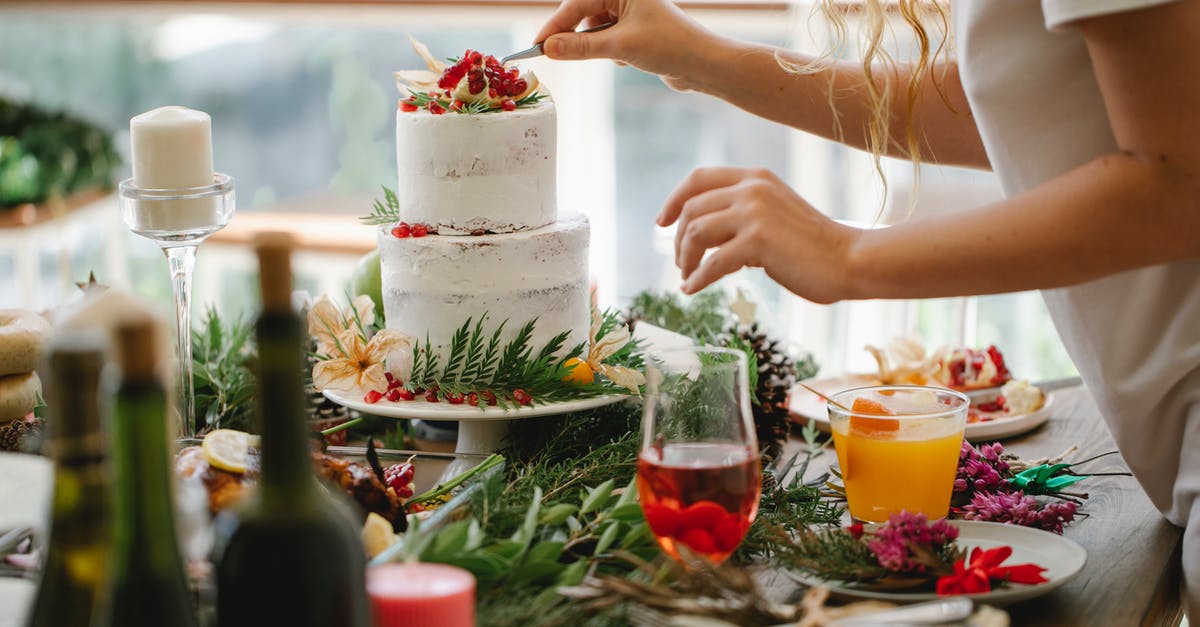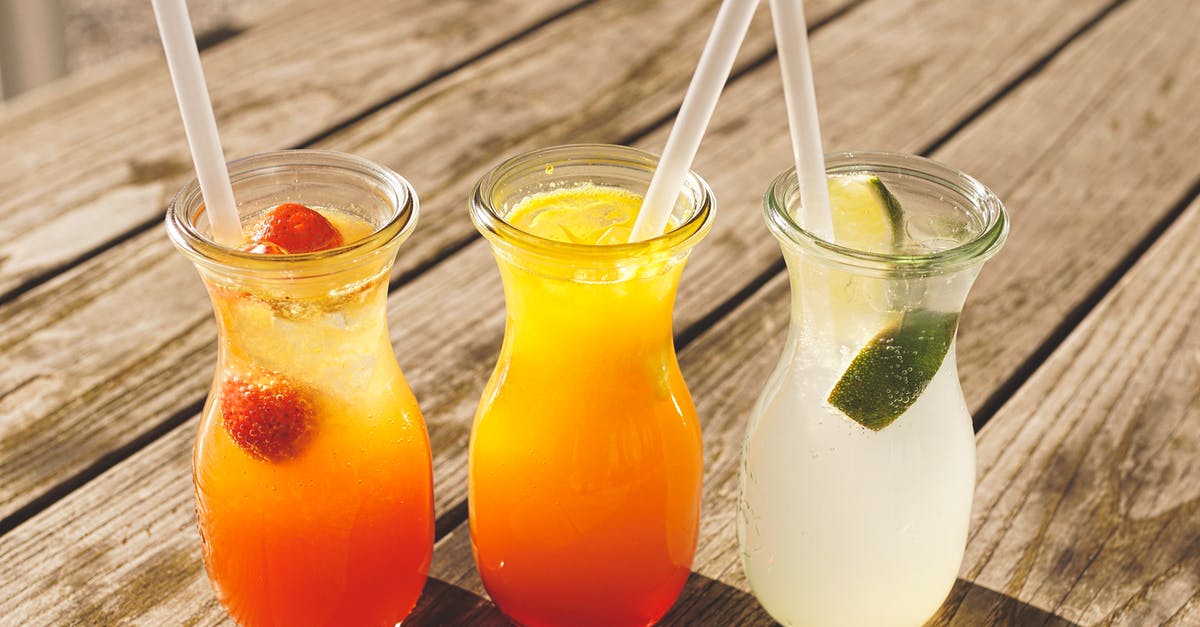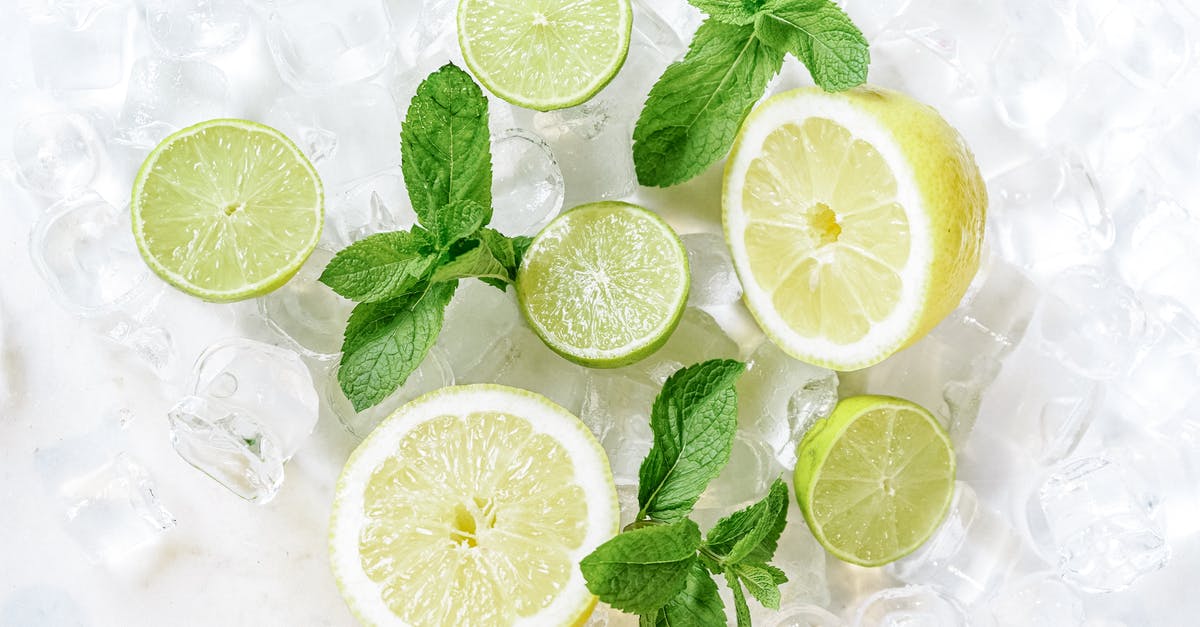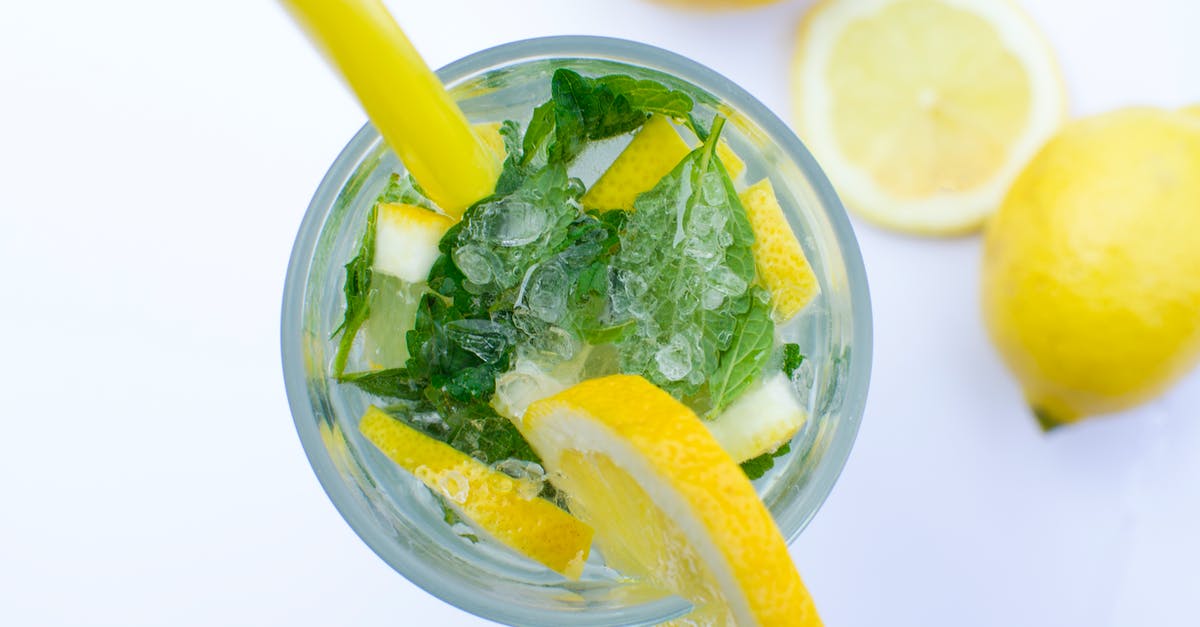How to add fresh fruit chunks to ice cream?

What are the key techniques when adding chunks of fresh fruit to homemade ice cream? How do I prepare the fruit, and when is the best time to add it to the ice cream? I don't want the fruit to be a hard icy chunk in the middle of the ice cream when it's served.
I've used strawberries in this example, but would like something that applies to other fruit like peaches, raspberries.
Last summer, we added fresh sliced strawberries to home made vanilla ice cream just after the ice cream came together in the ice cream maker. But the strawberries were so wet that we lost the texture of the ice cream and ended up with flavored ice.
Best Answer
To expand michaels answer (assuming that you want strawberry icecream and not pieces of strawberry mixed in).
If you are making a custard ice cream, leave the amount of egg yolks the same, because you want the lecithin from them. Reduce the sugar somewhat, because fruit is sweet. Then decide how much fruit puree you want (maybe 1/3 the volume of the dairy part). Adjust the volume of the dairy so that the liquid is correct. Adjust the fat of the dairy so that the fat content is correct.
Example, you start with the recipe for vanilla ice cream French (=custard) style by Lebovitz.
1 cup (250ml) whole milk; A pinch of salt; 3/4 cup (150g) sugar; 1 vanilla bean, split lengthwise; 2 cups (500ml) heavy cream; 5 large egg yolks; 1 teaspoon pure vanilla extract
This recipe has 185g fat (I calculated with 30% fat in the cream), 460g dry matter (this is both fat and non-fat) and yields 990g ice cream (rounded a bit). Let's say that you decide to use 200g strawberry puree. 200g strawberry puree has 10g sugars, 18g dry matter and no fat. A mixture of 5 yolks, 140g sugar (if you want, you can look at the fructose sweetness coefficient and change the sugar accordingly, but I think this isn't so much of a problem if we just substitute the 10g from strawberries), 200g strawberry puree and some salt and vanilla has 25g fat, 225g dry matter and weighs 430g (rounded). You could create two equation systems, the first for the total volume of the dairy mixture needed, and the second one for the ratio of cream to milk, and solve these to get to a mixture with the original ratio.
fatamount/total = fatpercentage liquidamount/total = liquidpercentage fatpercentage + liquidpercentage + nonfatdrypercentage = 1
where you know fatamount, liquidamount and nonfatdrypercentage is around 0.1 (actually 0.08 for milk only and 0.12 for cream only, but we don't need so much precision). Solve for total, then calculate fatpercentage.
0.3*cream + 0.04*milk = fatpercentage*(milk + cream) milk + cream = total
I will take a shortcut here. I specified almost as much strawberries as milk. They have no fat (unlike milk), but a similar (actually higher) amount of dry mass. So let's see what happens when we keep the 500g cream and turn the 50g difference between strawberries and milk into cream too (because we suspect we want some more fat). Then we have 190 g fat, 290g dry matter and 980g ice cream base. At 19.38% fat, we are above the ratio given in the article, but close to the original ratio (and I suspect that the article might be about Philadelphia style ice cream, which has less fat). The 29.59% dry matter are again outside of the article recommendation, but close to the original recipe. In fact, I assume that well emulsified fat can prevent ice crystal creation, so the higher liquid content doesn't create problems here (also note that McGee gives a 10-20% range for fat in ice cream, not 7-12%).
Long story short: don't add fruit puree, it is mostly water. Substitute puree for milk, calculate the new percentage of fat and dry matter (use the 7-12% fat and 37-42% liquid for a recipe without emulsifiers, you can be freer if you have emulsifiers; egg yolk counts as emulsifier). If you are still not there, try the calculation with less puree, or increase the fat and/or dry matter until you are in the recommended range. Or just start with the equations.
NB #1 I didn't check my calculations, could have a mistake there. But the principle should be correct.
NB#2 I calculated with cream density of 1. This was somewhat surprising, but the nutrition data for cream I found insists that a cup of cream (240 ml) weighs 238 g, so the difference is small enough to not go to the trouble to convert. A recipe given by volume probably (hopefully) has some leeway, so this shouldn't skew the results into a bad recipe.
Pictures about "How to add fresh fruit chunks to ice cream?"



Quick Answer about "How to add fresh fruit chunks to ice cream?"
The first option would be to make sorbet out of it, then put chunks of strawberry sorbet in the ice cream. Then you could just add stuff which prevents freezing / crystal building. Try salt, sugar, alcohol, xanthan gum, and propylene glycol. Drops of this should form nice chunks, not as hard as ice.How do you put fruit chunks in ice cream?
InstructionsHow do you use fresh fruit in ice cream?
You might think that you could simply add cut up fruit to your vanilla ice cream base \u2013 and you could. But because fruit has a lot of water, you'll end up with icy chunks of fruit disrupting your otherwise-smooth-and-creamy ice cream experience. So instead, you simply cook the water out of the fruit.How much fruit do you put in ice cream?
Measure out your pur\xe9e, then measure out an equal amount of half and half (or whole milk plus heavy cream in equal proportions). If you start with 18 ounces of fruit, you'll get somewhere in the ballpark of 2 cups of pur\xe9e, which will yield a quart of ice cream when combined with dairy.How do you add fruit to Gelato?
Always take the gelato out to room tempera- ture 10 to 15 minutes before serving to soften it and make it easier to scoop. Place the fruits in a large bowl, then add the sugar and lemon juice. Mix to coat the fruits thoroughly. Let rest at room temperature for 15 to 30 minutes.5 NEW Fruity Ice Cream Recipes
More answers regarding how to add fresh fruit chunks to ice cream?
Answer 2
If you will you this technique to first freeze the strawberries. Then add the solid frozen berries to the mixture the berries will stay firm through process and then "warm up" (oddly enough) in the ice cream.
Answer 3
Now an answer to your actual question: chunks of strawberry.
The problem is that strawberries are made of 91% water, and they freeze when put in ice cream. So I am afraid you can't have real fresh strawberry pieces. But with some tricks, you can have tasty strawberry chunks.
An easy way out is to cut them in very small pieces, maybe 3-4 mm each side. They won't interfere with chewing then, but won't taste of much either. I wouldn't do it, just mention it here for completeness.
The easiest way is to cook a strawberry marmelade with whole fruit. Then remove the syrup and use the strawberry pieces only. If you use enough sugar, they won't freeze. Smooth strawberry marmalade or a thick strawberry syrup can also be layered or marbled with the ice cream, resulting in streaks of strawberry taste in the vanilla ice cream.
If you don't want to cook the strawberries, you can try some other approaches. You could dry them in a dehydrator first (but warning, they could get rubbery/lose taste that way). Then you could puree them and make sure the puree doesn't freeze. The first option would be to make sorbet out of it, then put chunks of strawberry sorbet in the ice cream. Then you could just add stuff which prevents freezing / crystal building. Try salt, sugar, alcohol, xanthan gum, and propylene glycol. Drops of this should form nice chunks, not as hard as ice. You can also use gelatin to make strawberry marshmallows (I don't know the highest possible proportion of strawberries is before they start hardening in the freezer, you'll have to play around).
If you want to have the texture and taste of fresh strawberries, your only option is to serve the normal ice cream with fresh strawberries on top. In fact, this is my preferred solution - but if you still want chunks, try the ideas above.
Answer 4
Here is an explanation of how to get the fat/water/dry contents ratios correct by pastry chef, Michael Laiskonis. It may be a bit too complex for the average cook (such as myself), but it is still illuminating.
Make your ice-cream between 7 and 12% fat. Dry matter should be 37-42%. The rest is liquid.
If you do the work to calculate how much liquid and dry matter is in the fruit, you can get the good texture the questioner was looking for.
Sources: Stack Exchange - This article follows the attribution requirements of Stack Exchange and is licensed under CC BY-SA 3.0.
Images: Tim Douglas, Susanne Jutzeler, suju-foto, ANTONI SHKRABA, Lukas
